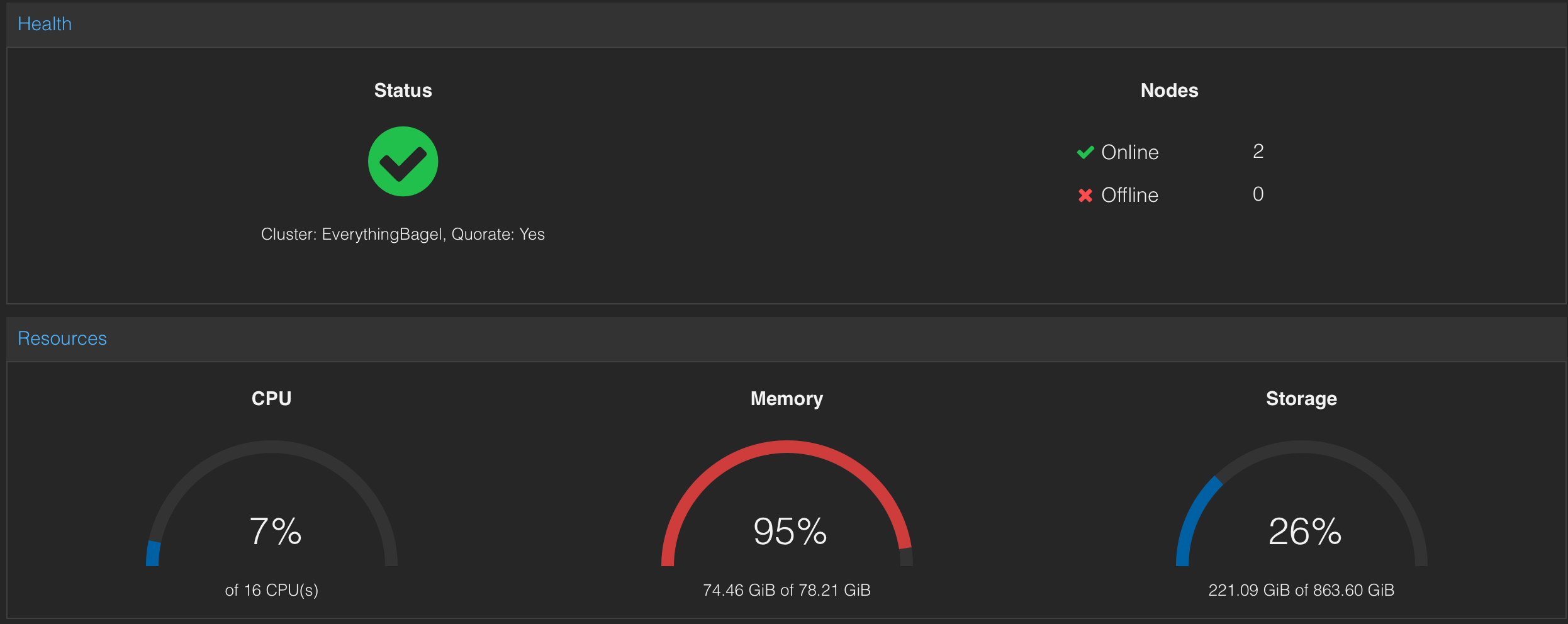My Proxmox Setup
Proxmox is an open-source hypervisor. In simple terms, it is a lightweight Linux OS that allows you to create VMs and containers inside of it. I prefer the flexibility of VMs rather than an install on baremetal due to the customization you have over the system. If I want to add more storage to one VM, I just turn the VM off, allocate more storage to it, and turn it back on. No need to buy another hard drive and try to set up a RAID configuation on the OS itself. Proxmox also gives me a view of resource usage for all VMs and containers, something you would need to go into Task Manager on Windows to see, repeating the task for each OS. What I like most about a hypervised setup is the ability to run multiple OS' concurrently, without a serious loss in performance.
Currently, I have two nodes running. Both were purchased from IU Surplus. The older one is a Dell Optiplex 7010, and the new one is quite the beast - it's a Dell Optiplex 7060 with a 6-core i7, 2 AMD Radeon RX560 4GB Graphics Cards, 32GB of RAM, and a 512GB nVME drive, all for $190 from Surplus. I have since speced it up to 64GB, and it has more than enough power to create 3D models in Autodesk Inventor, work in Excel, and run a flask app, all at the same time.
For future development, I have a HP Elitedesk 800 Mini PC that I am looking to add in to the cluster to serve as a quorum backup for failover scenarios. I also have two Mac Minis connected to the living room and bedroom TVs for the sole purpose of watching Canvas videos or sports. Adding a "virtual" instance to each Mac (adding a second user account and screensharing into the new user account will allow you to view a new instance of MacOS, without affecting what the Mac is outputting from it's built in HDMI port), and installing Proxmox via VMware will allow me to get a little more usage out of each Mac when they are not being used.

